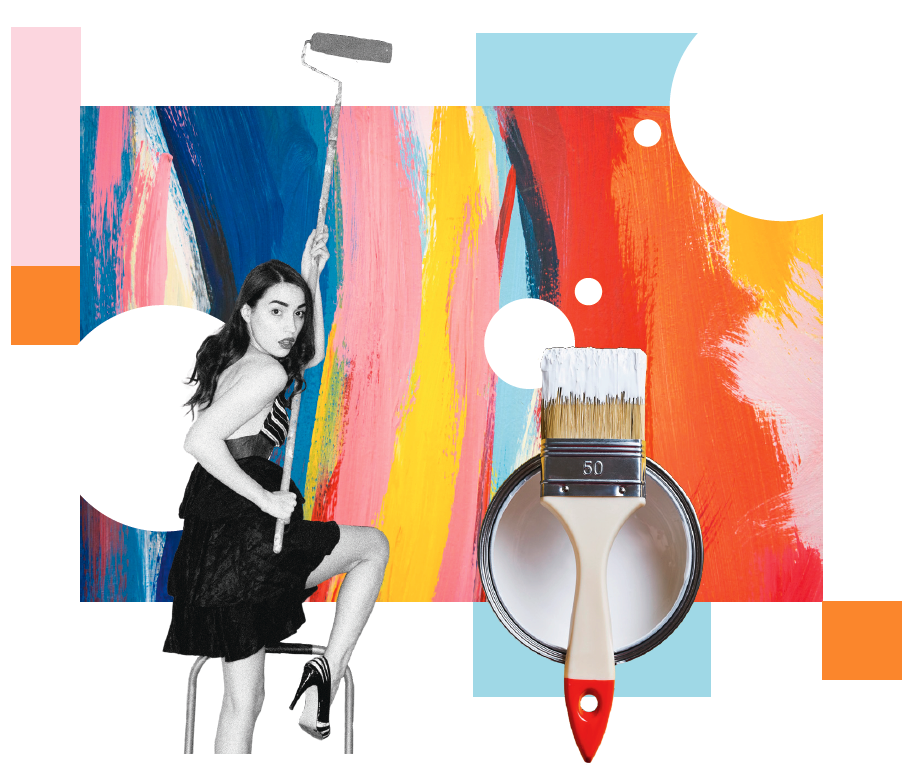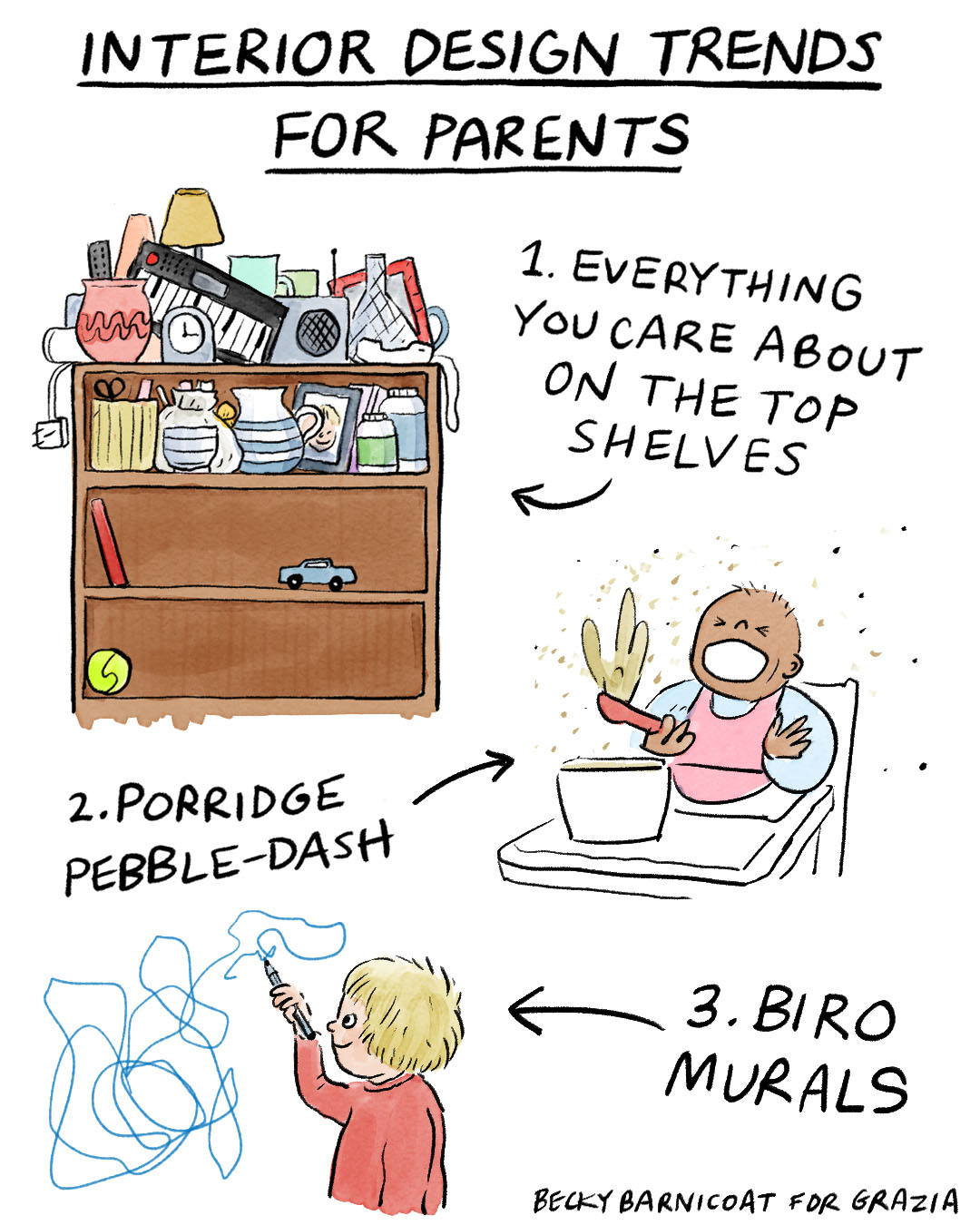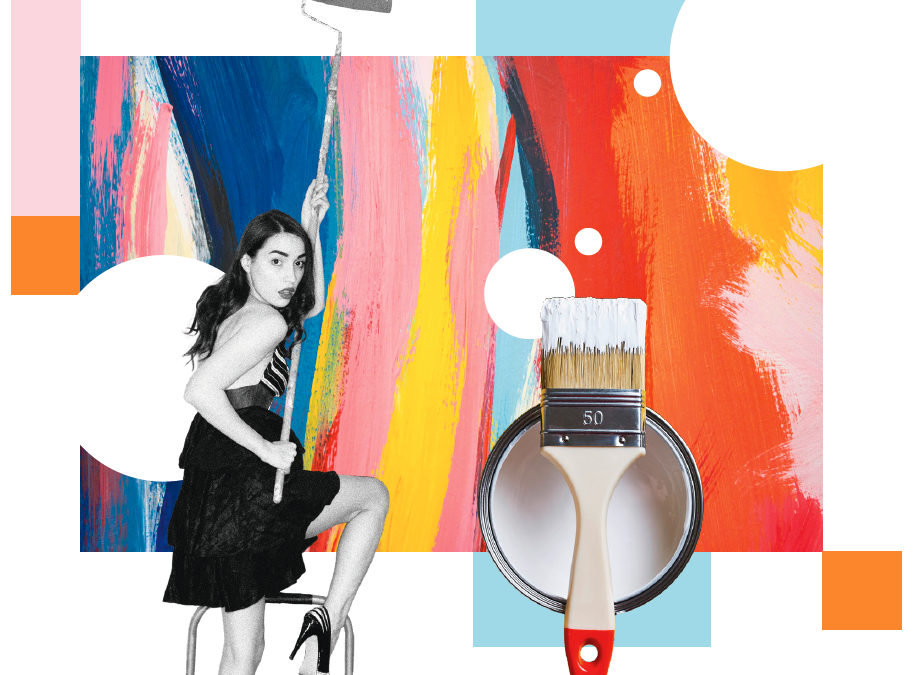GRAZIA CASA DIY

Decorating skills
HOW TO PAINT LIKE A PRO
Prep, prime and pay attention to detail, says expert Edward Bulmer
Getting decorators in might feel like an expense you can do without these days, but painting an entire room can also feel overwhelming. It doesn’t have to, though, says Edward Bulmer, leading interior designer and architectural historian. Painting your own home shouldn’t feel like an unachievable task.
First, Bulmer says, clean everything. ‘The surface you are painting must be clean, grease-free, dry, sound and free from staining substances. Previously painted surfaces should be rubbed down and washed with water. Glossy surfaces should first be rubbed down with sandpaper.’
Next, you fill. ‘Fill all holes, cracks and imperfections with a suitable filler before any paint products are applied. Any and all sanding should be completed, and all dust removed, before you start painting.’
Do not under any circumstances skip the primer. ‘It creates a perfect base surface as well as the best results when finished.’ Then stir your colour. ‘We recommend applying the emulsion finish by roller and cutting in with
a brush. A spray gun can also be used.’
No corners should be cut when it comes to cutting in. ‘Always paint to a wet edge – including cutting-in, which should not be carried out in advance,’ says Bulmer. ‘When using a roller, use a small roller over the brushed cutting-in to achieve a more even finish. Recoat only when the previous coat is thoroughly dry, after four to six hours.’

How to…
CHOOSE BATHROOM TILES
Select your tiles wisely and they can transform a dull bathroom into something special. James Sirett, head of product at Fired Earth, explains how…
■ Arranging inexpensive tiles in an eye-catching layout on the wall or floor will make them look expensive. For example, metro tiles laid in a basketweave or herringbone design.
■ Just a few spectacular tiles, such as hand-decorated designs used as a splashback or a jewel-like mosaic border around a bath, will make an impact in a small bathroom.
■ Patterned tiles and bold geometric designs will help ‘fill’ the space in a large bathroom, creating a welcome sense of warmth. Think about scale – a little pattern can go a long way.
■ Light-reflective finishes, such as metallics, glass and polished stone in neutral palettes, create the illusion of more space in a small bathroom and add a touch of glamour.
■ For a wet room or wet room-style bathroom, large format tiles – 60 x 60cm or even larger – on walls and floors create a seamless, flowing look (always check tiles’ suitability for wet room floors).
■ In a busy family bathroom, an uplifting colour or pattern will get everyone’s day off to a good start. Opt for low-maintenance porcelain tiles to keep cleaning and maintenance to a minimum.
■ Try to see a few samples of the tiles you’re planning to use so you can get a feel for the possible colour or surface variations. This is particularly important in the case of natural materials and handmade designs, where no two tiles will be the same.

WALLPAPER Q&A
Farrow & Ball brand ambassador Patrick O’Donnell answers your dilemmas about wallpaper trends and choices
Where can you try hanging wallpaper that you may not have used it before?
The bathroom. Wallpaper always brings textural relief to any room, but we don’t often consider the bathroom. But if the conditions are right (good ventilation) it can really soften all the other ‘hard’ elements.
What wallpaper taboo should we break?
Large-scale prints in small rooms – yes, I know this seems counterintuitive but applying a big print in a tiny space, such as the downstairs loo, works a treat and delivers a big dollop of drama in an often unpromising space.
New wallpaper trend to try?
Papering the ‘fifth wall’, aka ceiling. It doesn’t have to be just an afterthought in a ubiquitous white paint. Wallpaper on a ceiling creates a talking point; be as graphic as you dare, but striped papers always work brilliantly and are a great idea for a child’s bedroom, especially as there’ll be no anxiety about scribble marks.
DIY wallpapering – is it a bad idea? And where do I start?
A good idea! Often, it’s best to start hanging wallpaper as near as possible to the natural source of light, then work away from it as you go. If you find yourself needing to overlap a joint due to uneven walls or ceilings, this method minimises the risk of any overlapped edges being noticeable when viewed from across the room, as they’re less likely to cast a shadow.
Need some expert advice on DIY, interiors or anything else? Let us know what you’d like to see at [email protected]

Maximise your space
IT’S TIME TO DECLUTTER
It feels like a lifetime ago when we all decided to Marie Kondo our knicker drawers after the Japanese organisational doyenne’s Netflix series landed, inspiring us all to lose the clutter from our lives. Since then, if you’re anything like us, the clutter has rapidly reappeared no matter how often we try to cram it back under the stairs. So, if you’re ready to start afresh, Claire Taylor of Instagram account My Favourite Space (@favourite_space_london) and decluttering expert (trained by Marie Kondo herself), says there are a few simple ways that will help you on your way to a more streamlined life.
‘First, get rid of anything you no longer wear, use or like. If the task feels overwhelming, take one category at a time: shoes, books, toiletries, kitchen gadgets. Be brutal – do you really need 10 tote bags?’
Seeking out hidden storage is a savvy move, says Taylor. ‘Use the inside of wardrobe doors by adding command hooks to hang bags and belts. Hook a basket on the back of your bathroom or bedroom door for extra storage. Look to Zara Home and H&M for wall hanging baskets. Shoes work well in under-bed drawers (face pairs in opposite directions to squeeze more in). John Lewis’s water hyacinth under-bed storage baskets are inexpensive and more attractive than plastic boxes.’
There is no need to have cupboards full of paperwork, says Taylor. ‘Eliminate your home of paper! Keep a folder of your important documents, such as passport, driving licence, birth certificate, qualification certificates, house deeds, etc, and digitise documents you need to keep hold of, such as tickets or insurance documents. Apps like FYIO keep everything securely in one place – your digital filing cabinet. Another tip is to keep a bin by the front door to ditch unwanted paper/mail as it comes into the house.’
We feel lighter already.
Three steps to…
ART CURATION PERFECTION
1. Master the gallery wall. Start with a few pieces and build it over time. The key is to start hanging in the middle of the wall and build outwards. When choosing the pieces for your gallery wall, the most important thing is to pick ones you love. There are no rules! Eclectic works brilliantly. Art also looks great mixed with photos and memorabilia.
2. Try to avoid following trends and don’t be afraid to let the art you pick reflect your personality. Mix and match and experiment with different genres – just as your furniture may be an eclectic mix of styles, so can your art within a room.
3. Think about the mood you’re aiming for – this will help you find the right art. Would you like to create a bright, uplifting mood or are you seeking a more calming feel? Art has the power to transform your living room into something new and to make you happy; considering what type of feeling you desire when browsing will help. You’ll be looking at this art daily, so take your time to explore what you are drawn to.
LIFE DRAWING – BECKY BARNICOAT

PHOTOS: GETTY, SHUTTERSTOCK

